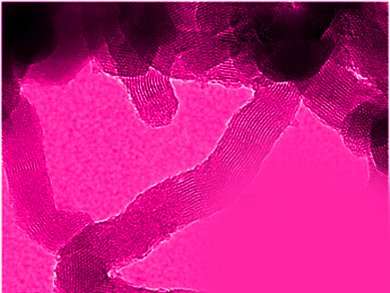The assembly of small molecule precursors into helical architectures is a common motif in nature. It is often a critical component of the function of the resulting supramolecular assemblies, such as in DNA. Inspired by these architectures, materials chemists have prepared similar morphologies, for example by the application of templated sol–gel methods.
A team lead by Cathleen M. Crudden, Queen’s University, Kingston, ON, Canada, report a simple method to synthesize ordered chiral helical organosilicas with ultrasmall mesopores. They used, for the first time, a chiral dopant in the form of a co-monomer in such helical structures, enabling them to exert control of the structure by the type and nature of the co-monomer employed. It also permits the introduction of functionality into the material, for example in the form of alkoxy groups that can serve as a handle for further chemical manipulation. The synthesis of these hybrid materials can be affected in under 1 hour.
The potential for chiral helical hybrid organic silica materials (HHOM) with pores in the range described herein is significant. All of the porous inorganic and hybrid helical materials reported to date have relatively large pores, but it is at smaller length scales that chiral interactions between the material and molecular species are likely to be strongest.
- The Synthesis of Chiral Periodic Organosilica Materials with Ultrasmall Mesopores,
Xiaowei Wu, Thomas Blackburn, Jonathan D. Webb, Alfonso E. Garcia-Bennett, Cathleen M. Crudden;
Angew. Chem. Int. Ed. 2011.
DOI: 10.1002/anie.201101009




